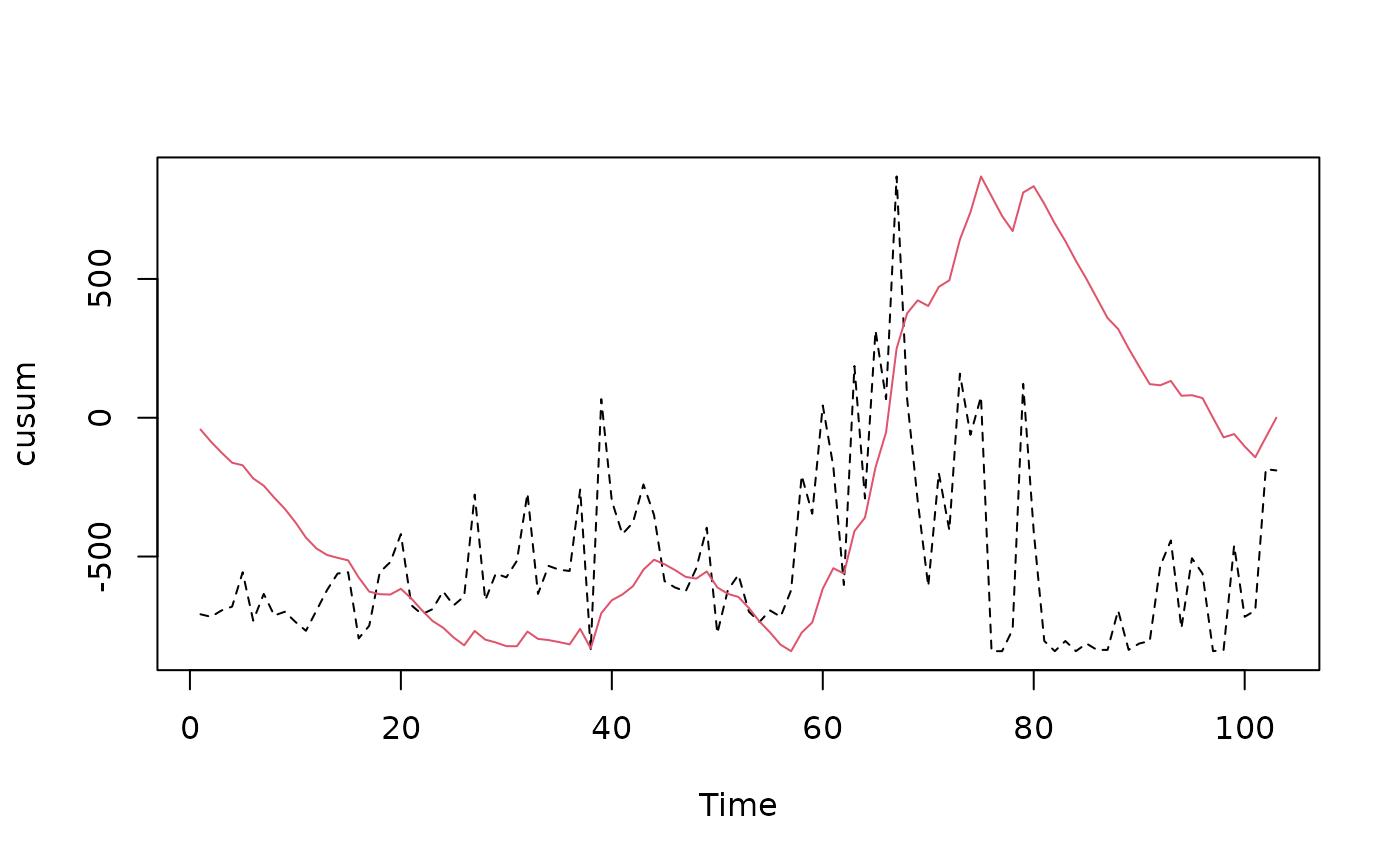
Calculate local trends using cumsum
local.trend.RdA simple method using cumulated sums that allows to detect changes in the tendency in a time series
Arguments
- x
a regular time series (a 'ts' object) for
local.trend()or a 'local.trend' object foridentify()- k
the reference value to substract from cumulated sums. By default, it is the mean of all observations in the series
- plotit
if
plotit=TRUE(by default), a graph with the cumsum curve superposed to the original series is plotted- type
the type of plot (as usual notation for this argument)
- cols
colors to use for original data and for the trend line
- ltys
line types to use for original data and the trend line
- xlab
label of the x-axis
- ylab
label of the y-axis
- ...
additional arguments for the graph
Details
With local.trend(), you can:
- detect changes in the mean value of a time series
- determine the date of occurrence of such changes
- estimate the mean values on homogeneous intervals
Value
a 'local.trend' object is returned. It has the method identify()
References
Ibanez, F., J.M. Fromentin & J. Castel, 1993. Application de la méthode des sommes cumulées à l'analyse des séries chronologiques océanographiques. C. R. Acad. Sci. Paris, Life Sciences, 316:745-748.
Note
Once transitions are identified with this method, you can use
stat.slide() to get more detailed information on each phase. A
smoothing of the series using running medians (see decmedian()) allows
also to detect various levels in a time series, but according to the median
statistic. Under R, see also the 'strucchange' package for a more complete,
but more complex, implementation of cumsum applied to time series.
See also
Examples
data(bnr)
# Calculate and plot cumsum for the 8th series
bnr8.lt <- local.trend(bnr[,8])
 # To identify local trends, use:
# identify(bnr8.lt)
# and click points between which you want to compute local linear trends...
# To identify local trends, use:
# identify(bnr8.lt)
# and click points between which you want to compute local linear trends...
